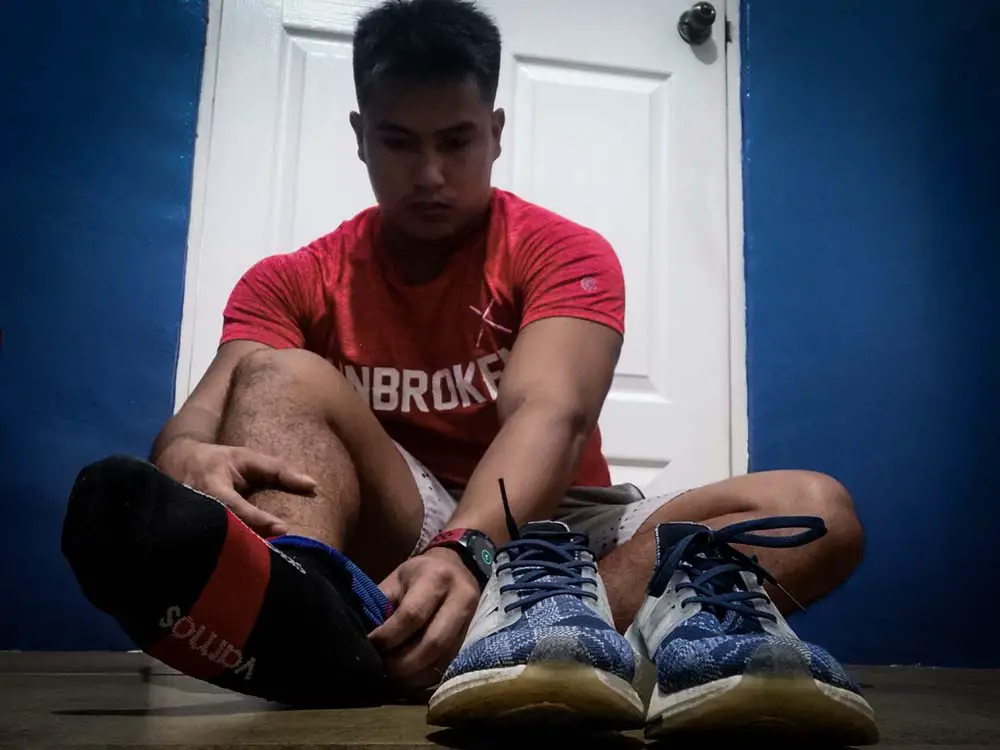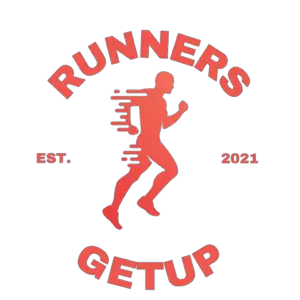This post contains affiliate links.

I was running for a long distance when my foot started to feel uncomfortable. The next day, I looked for ways to improve the comfort of my runs and I realized I wasn’t really optimizing my running socks. So I researched the advantages and disadvantages of cushioned socks to find out if I should wear them in my runs. Here’s what I’ve gathered:
In general, you don’t need to wear cushioned socks to run. However, if you’re looking to improve the comfort of your runs and fill up some extra space in your shoes, wearing cushioned socks might help.
Ahead, we will talk more into the details of the advantages and disadvantages of cushioned socks and when to use them. I will also give you some tips on choosing a good pair of cushioned socks along with my sock recommendations.
Are Cushioned Socks Good For Running?
Depending on who you ask, cushioned socks can be good or bad for running. If you ask a person with narrow feet or someone who runs very long distances, most often than not they’ll say cushioned socks are great for running.
But if you ask a sprinter or a person with wide feet, most often than not they’ll go against cushioned socks.
Why? Because like most things, the answer will depend on your personal preference. Cushioned socks are good for runners who’d like to find more comfort and protection in a pair of socks while thinner socks with less cushion are good for sprinters looking to improve responsiveness.
To better understand if you need cushioned socks, let’s take a look at the advantages and disadvantages of cushioned socks.
The Advantages and Disadvantages Of Cushioned Socks
The advantages of cushioned socks:
- Protects your foot from blisters – Cushioned socks decreases the amount of friction between your foot and shoes
- Fills up the extra space in your shoes – Thick cushioned socks can help runners with narrow feet improve the fit of their running shoes and create a snugger fit
- Helps lessen the impact – Cushioned socks help absorb the impact from the ground contact which is ideal for long-distance runs
- Provides more warmth – If you’re running in cold weather, thick cushioned socks help provide more insulation allowing you to run longer
- Improves overall comfort – The extra thickness in cushioned socks provides more overall comfort all around the foot
Disadvantages of cushioned socks:
- Less breathable – Because most cushioned socks are generally thicker (but not all), they are also less breathable than thin socks
- Not ideal for tight shoes – We all have that one shoe that feels tighter than the others, wearing thick cushioned socks in a tight shoe causes discomfort
- Decreases responsiveness – In shoes, the more cushioned it is, the less responsive it gets. The same is true for running socks, cushioned socks may affect your responsiveness and possibly affect your running speed
When To Use Cushioned Socks
That said, asking whether cushioned socks are good for running is not the question you should ask. The more appropriate question to ask is when is the best time to use cushioned socks?
- During long runs – Because long runs require comfort over speed, cushioned socks are the ideal pair of socks when running long distances. It keeps your foot protected from blisters and helps improve the shock absorption in your shoes
- When it’s cold – I’ve mentioned that most cushioned socks are generally thicker than the ones with less cushion. That said, wearing thicker socks is ideal for running in cold weather.
- When you need to fill extra space in your shoes – For those of you who are struggling with a shoe that fits your narrow feet, wearing thick cushioned socks can help you fill up some extra space in a loose-fitting shoe
Tips In Choosing A Pair Of Cushioned Socks
Now that we’ve talked about the advantages and disadvantages of wearing cushioned socks and when to use them, I assume that you’ve already decided whether you need them or not. But before you go ahead and buy one, here are some tips in choosing the right pair of cushioned socks:
Tip #1: Buy running-specific socks
Running-specific socks have cushioning placed strategically in places where it’s needed like the heel and the forefoot. In addition, running socks have moisture-wicking properties that keep your foot fresh and dry no matter how sweaty you’re gonna be.
You might be tempted to buy a cheap pair of thick cotton socks that you used to wear in PE class back in high school. But wearing cotton socks is a big no-no for running. I listed 5 reasons why in another article.
Tip #2: Find cushioned socks with improved breathability
Because cushioned socks are generally thicker, it’s also less breathable than thin socks. That said, it’s important to find socks that have vents to make them more breathable.
There are also cushioned socks that have less bulk. Such premium socks are a good option if you want to combine the breathability of thin socks and the cushioning of thick socks. My favorite pair of socks, the Balega Ultraglide, is exactly what I just described. You can buy them on Amazon.
Tip #3: For cold weather, wear socks made of Merino wool
The thickness of the sock isn’t the only thing that’s important when wearing them for cold weather. The type of fabric used also matters.
That said, when running in cold weather, I found that the best socks to use is one that is made with Merino wool. They are generally better at thermoregulation than the other fabrics I tried and they also have good moisture-wicking properties that rid your foot of the moisture of your sweat.
If these tips aren’t enough and you want the full guide in choosing a running sock, I created a full guide in another article. be sure to check that out before you buy a pair of socks.
My Favorite Cushioned Socks
Now that you’ve learned about cushioned socks, when to use them, and some tips on buying them, you may want to skip the process of decision-making and just buy ones that I’ve tested and recommend.
Here are my favorite cushioned socks:
Balega Ultraglide Friction-Free Socks – A few of the reasons why I love them is because they provide cushioning in strategic places where a little cushioning and protection are needed, but they aren’t thick overall allowing me to wear them in those hot summer months.
For example, it has the usual extra cushioning in the heel and toe and also in the area where the laces are to reduce the lace pressure. But the other parts of the sock are thin and breathable making it a good sock for the summer.
I also love the pads in the metatarsal area which helps with forefoot striking and uphill runs.
SmartWool PhD Run – I’ve mentioned that one of the best sock fabrics to use in cold weather is Merino Wool which is exactly what these socks are made of. They generally have better thermoregulation properties than all fabrics I’ve tried. They will keep your foot warm in cold weather but not too warm that it becomes uncomfortable.
Like the Balega, these socks have targetted cushioning in the forefoot and heel to help absorb the impact without being too bulky.
Final Thoughts
Wearing the right pair of running socks is as important as wearing the right pair of running shoes. And like there are different types of shoes for different types of runs, there are also different types of socks that work well for different kinds of runs.
To find the perfect running socks, mix and match your socks and your shoes and take note of what worked well and what didn’t. You should try out multiple pairs of socks and find what works best for you.
If you found that the socks that worked well for me didn’t work well for you, use the tips I shared above in choosing running socks.
